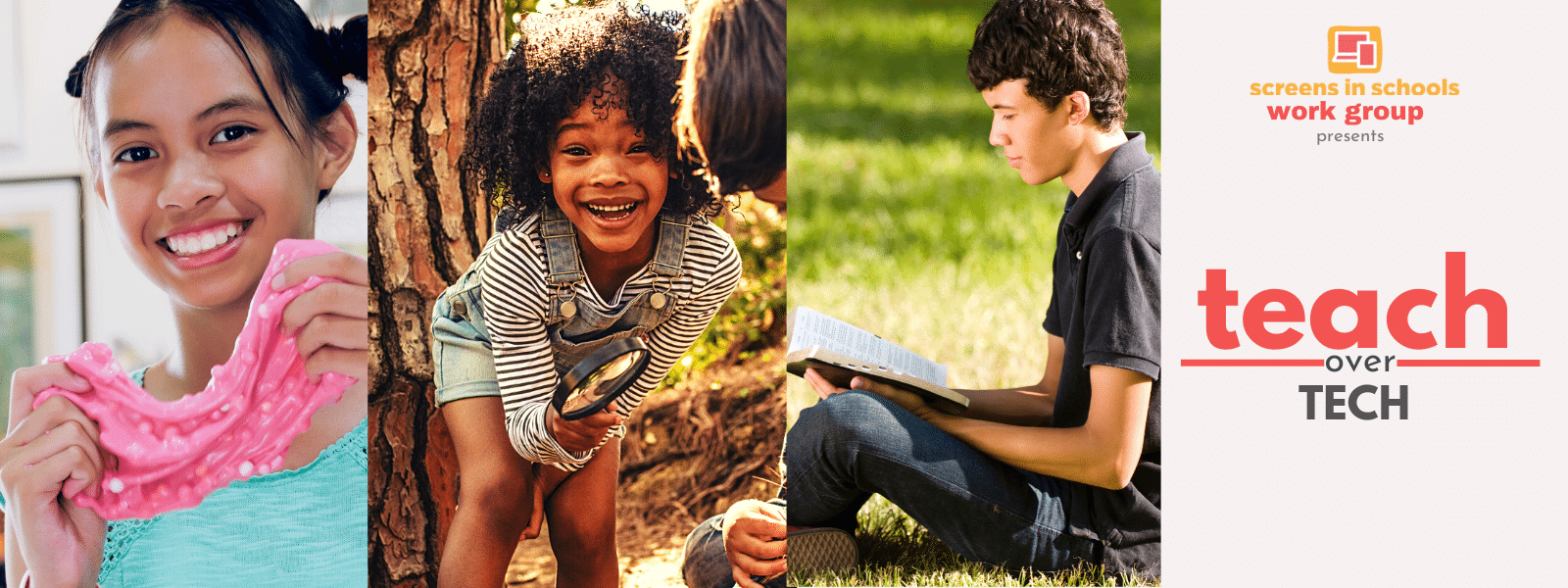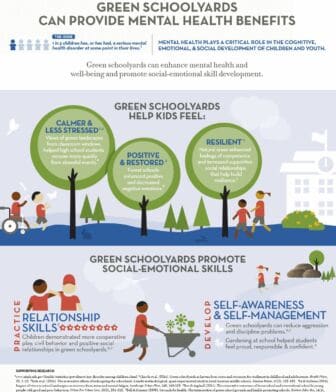
Outdoor Classrooms, anyone?
By Jenifer Joy Madden
[Abridged version. Original article posted on Durable Human, August 27, 2020.]
It was late December and cold in Washington, D.C. Still, families flocked to sit outdoors in a park for story time. It was an easy way to give them an idea of what it would be like if students had school outdoors, according to Action Network member, mom, and former warzone nurse, Laura Derrendinger.
That kids have better physical and mental health during the pandemic aren’t the only reasons Derrendinger and so many others have joined the Green Schoolyards movement.

Schools weren’t built to keep students six feet apart, but much more space is available on the school grounds or on adjacent public parkland.
Being in fresh air greatly lessens the chance of coronavirus transmission. According to the Children and Nature Network, many studies show that kids get a boost from nature—to their spirits, test scores, and graduation rates.
Besides the social and emotional benefits of learning together outdoors, it’s more equitable. In some lower income communities when remote learning began last spring among students who had devices like Chromebooks and hot spots, only 60% were used.
Lots of Options
Schools can utilize outdoor spaces in many ways. Half a class of kids could be outside for half the day, then they could switch for the other half. Individual classes, such as library, PE, or science, can be held outside. Since students need to remove their masks when they eat, the risk of spreading the virus is greatly reduced when they eat outdoors in the schoolyard.
 The American Academy of Pediatrics has come out strongly that it’s best for kids when they can physically learn together at school. Dr. Dimitri Cristakis, editor of JAMA Pediatrics, reports that young children, especially, have “very little risk” of contracting the virus, which is also borne out in this study.
The American Academy of Pediatrics has come out strongly that it’s best for kids when they can physically learn together at school. Dr. Dimitri Cristakis, editor of JAMA Pediatrics, reports that young children, especially, have “very little risk” of contracting the virus, which is also borne out in this study.
As one strategy schools can use to bring children together, the nation’s top epidemiologist, Dr. Anthony Fauci, has endorsed outdoor learning.
Outdoor Schools in Action
Just before the start of school last fall, the mayor of New York City gave every school in the city the green light to consider utilizing school grounds or public areas nearby.
In January 2021, the Washington, D.C., State Board of Education unanimously passed a resolution asking the city to support schools who want to provide learning outdoors as an option. Calling it an “urgent concern”, the advisory body asked for $4 million to fund “safe, well-equipped and weather-equipped outdoor learning spaces,” in the same way the city funded restaurants so they could serve customers safely outdoors.

Public schools in Falmouth, Massachusetts, are already investing in outdoor education. After having rented two canopies per school through the late fall, the school system — aided by a 260 person group of parent volunteers — plans to buy durable outdoor tent structures, more suitable to New England’s notoriously changeable weather, for its seven schools. Volunteers have built child-sized outdoor desks and collected hundreds of wood stumps for seats, and created curricula for professional development for teachers to help them take advantage of outdoor teaching opportunities.
Free Help Getting Started
Thankfully, for others wishing to have school time in the outdoors, much work is already done.
Green Schoolyards American has a large library of free resources available online including a campus grounds assessment tool and a cost estimator.

Because only simple materials are typically needed, like tree stumps for seats and lumber for outdoor shelters, costs are usually low. Schools may also be able to tap into pandemic-relief funding from federal COVID-19 relief funds.
100 landscape designers around the world are offering free consultations to help schools get started. Find a designer here.
How do parents feel about having their kids learn outdoors? In Washington, D.C., a mom whose son attends classes outdoors one day a week is impressed by how well things have been going. Testifying before the D.C. State Board of Education in December she said, “As this pandemic and separation with the physical school continued, the disconnect with the learning community has increased.” When her son was able to return to school in the outdoor setting, she says, “It was truly remarkable to see how these 5th graders interacted with each other and started to enjoy their work and had curiosity in their fellow students.”

About the Author
Jenifer Joy Madden is an adjunct professor of broadcast and digital media at Syracuse University, is a certified Digital Wellness instructor, and founder of DurableHuman.com.

